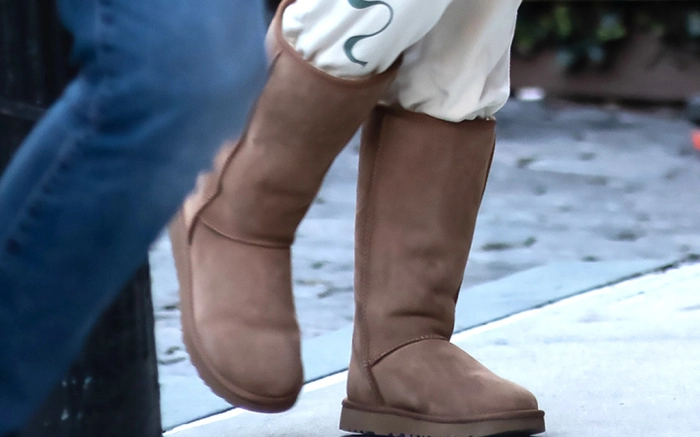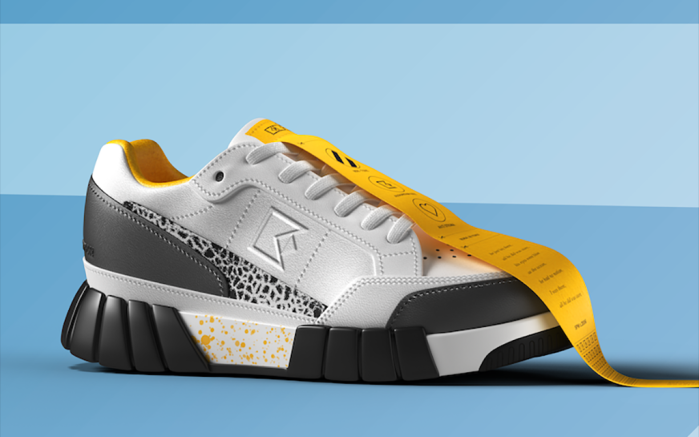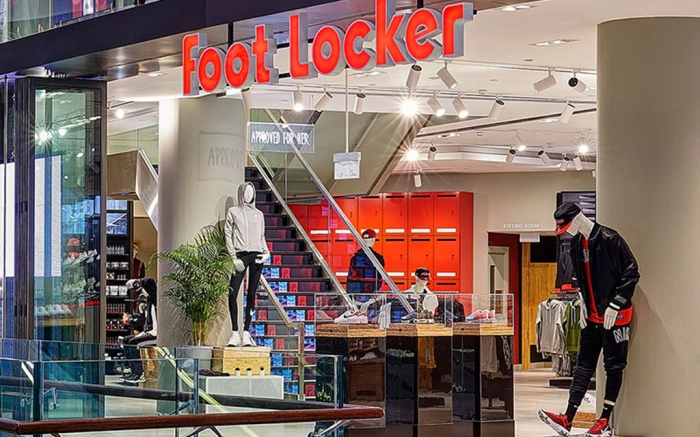How to Clean 5 Types of Shoes
May,22,2021
Take a look at your shoes scattered about on the floor or stored in neat rows in your closet. If you're like most of us, there are lots of different materials, finishes, and colors. The days of every shoe being black or brown leather are gone.
But how do you keep them looking good and lasting a bit longer? With just a few supplies and some easy steps, you can clean every type of shoe, even slippers.
Here are the correct ways to clean shoes made of all types of materials.
You may find some hack online about tossing fabric shoes in the washer. This is a bad idea because some have leather linings and almost all of the shoes are assembled with glue that won't stand up to all that water.
Instead, clean fabric shoe surfaces by hand with just some dishwashing detergent, warm water, an old toothbrush, and paper towels.
Wipe down the fabric with a dry paper towel to remove any loose surface soil.
In a small bowl, mix one teaspoon of dishwashing liquid in two cups of warm water.
Working on a small section at a time, dip the toothbrush in the soapy solution and lightly scrub the fabric. Do not over-wet. Work with the grain of the fabric, moving all around the shoe to keep the color consistent and prevent spotting.
To remove any soapy residue, wipe the entire shoe with a paper towel moistened with clear water. You may need several towels to "rinse" the entire shoe.
Blot with a dry paper towel and allow the shoes to air dry away from direct heat and sunlight. To help some shoes hold their shape, stuff dry paper towels into the toes or heels until the shoe is completely dry.
Do not use the wet cleaning method on velvet shoes. Instead, brush with a soft-bristled brush to lift the pile and spot clean stains with a dry cleaning solvent.
02 Leather, Patent Leather, and Faux Leather Shoes
For leather, patent leather or faux leather shoes, start by wiping off any soil with a cloth dipped in a solution of equal parts cool water and distilled white vinegar. This works particularly well to remove any winter salt stains. Allow the shoes to air dry completely.
For scuffs on real leather shoes, use a commercial polish and simply follow the directions. If you don't have a polish that matches white athletic shoes or today's rainbow of colors, wet a soft cloth with water and dip it in a bit of baking soda. Gently rub the scuffed area and wipe away the residue with a clean cloth. Allow to dry and then buff again with a clean cloth.
For scuffs on patent leather and faux leather shoes, rub the marks with a dab of petroleum jelly and buff with a soft cloth. Restore the shine with a spritz of glass cleaner and a buff with a soft cloth.
03 Suede, NuBuck, and Sheepskin Shoes
The key to keeping suede or any napped surface shoe looking its best is regular care. The surfaces should be kept as dry as possible and cleaned with a soft-bristled brush after every wearing to remove loose dust and soil. Treat stains as quickly as possible.
Marks and scuffs: Gently rub with a pencil eraser and then brush to restore the nap.
Oily stains: Sprinkle the area with baby powder or cornstarch to absorb the oil. Let the powder sit on the stain for at least an hour and then brush away. Repeat until all of the oil is absorbed and then brush to lift the nap.
Wet stains: Blot with a paper towel or cloth to absorb moisture. Allow the shoes to air dry completely away from direct heat. Brush to smooth the nap.
Sheepskin boots often have shearling linings that get even dirtier than the outside. To keep fungus and odor under control, regularly wipe down the inside of the boots with a cloth dipped in a solution of disinfecting cleaner (Lysol) and water. Allow the boots to air dry for at least 24 hours before wearing.
04 Rope and Cork Wedges
After you've cleaned the upper fabric or leather part of a wedge shoe, it's time to tackle the rope or cork covered sole.
Mix a solution of four cups of warm water, one-fourth cup distilled white vinegar, and one teaspoon dishwashing detergent. Work in a small area at a time and use an old toothbrush or cloth to clean the surfaces. For rope soles, work in only one direction to keep the rope from fraying.
When everything is clean, wipe down with a cloth dipped in plain water to rinse away soapy residue and allow the shoes to air dry.
05 Athletic Shoes
Most athletic and tennis shoes can simply be tossed in the washing machine and cleaned with a good, heavy-duty detergent like Persil or Tide. Remove any inner soles and the laces and wash the laces separately. Wipe away excessive soil and pretreat heavy stains with a stain remover before adding the shoes to a load of towels.
Always air dry. NEVER expose athletic shoes to the excessively high heat of the dryer.
To control odor and fungus, wipe down the inner soles with a disinfectant cleaner before placing them back in shoes or replace with new liners.
But how do you keep them looking good and lasting a bit longer? With just a few supplies and some easy steps, you can clean every type of shoe, even slippers.
Here are the correct ways to clean shoes made of all types of materials.
01 Fabric Shoes
Fabric shoes can be strappy sandals, sneakers, pumps or flats. But no matter the style, the fabric will eventually get dirty.You may find some hack online about tossing fabric shoes in the washer. This is a bad idea because some have leather linings and almost all of the shoes are assembled with glue that won't stand up to all that water.
Instead, clean fabric shoe surfaces by hand with just some dishwashing detergent, warm water, an old toothbrush, and paper towels.
Wipe down the fabric with a dry paper towel to remove any loose surface soil.
In a small bowl, mix one teaspoon of dishwashing liquid in two cups of warm water.
Working on a small section at a time, dip the toothbrush in the soapy solution and lightly scrub the fabric. Do not over-wet. Work with the grain of the fabric, moving all around the shoe to keep the color consistent and prevent spotting.
To remove any soapy residue, wipe the entire shoe with a paper towel moistened with clear water. You may need several towels to "rinse" the entire shoe.
Blot with a dry paper towel and allow the shoes to air dry away from direct heat and sunlight. To help some shoes hold their shape, stuff dry paper towels into the toes or heels until the shoe is completely dry.
Do not use the wet cleaning method on velvet shoes. Instead, brush with a soft-bristled brush to lift the pile and spot clean stains with a dry cleaning solvent.
02 Leather, Patent Leather, and Faux Leather Shoes
For leather, patent leather or faux leather shoes, start by wiping off any soil with a cloth dipped in a solution of equal parts cool water and distilled white vinegar. This works particularly well to remove any winter salt stains. Allow the shoes to air dry completely.
For scuffs on real leather shoes, use a commercial polish and simply follow the directions. If you don't have a polish that matches white athletic shoes or today's rainbow of colors, wet a soft cloth with water and dip it in a bit of baking soda. Gently rub the scuffed area and wipe away the residue with a clean cloth. Allow to dry and then buff again with a clean cloth.
For scuffs on patent leather and faux leather shoes, rub the marks with a dab of petroleum jelly and buff with a soft cloth. Restore the shine with a spritz of glass cleaner and a buff with a soft cloth.
03 Suede, NuBuck, and Sheepskin Shoes
The key to keeping suede or any napped surface shoe looking its best is regular care. The surfaces should be kept as dry as possible and cleaned with a soft-bristled brush after every wearing to remove loose dust and soil. Treat stains as quickly as possible.
Marks and scuffs: Gently rub with a pencil eraser and then brush to restore the nap.
Oily stains: Sprinkle the area with baby powder or cornstarch to absorb the oil. Let the powder sit on the stain for at least an hour and then brush away. Repeat until all of the oil is absorbed and then brush to lift the nap.
Wet stains: Blot with a paper towel or cloth to absorb moisture. Allow the shoes to air dry completely away from direct heat. Brush to smooth the nap.
Sheepskin boots often have shearling linings that get even dirtier than the outside. To keep fungus and odor under control, regularly wipe down the inside of the boots with a cloth dipped in a solution of disinfecting cleaner (Lysol) and water. Allow the boots to air dry for at least 24 hours before wearing.
04 Rope and Cork Wedges
After you've cleaned the upper fabric or leather part of a wedge shoe, it's time to tackle the rope or cork covered sole.
Mix a solution of four cups of warm water, one-fourth cup distilled white vinegar, and one teaspoon dishwashing detergent. Work in a small area at a time and use an old toothbrush or cloth to clean the surfaces. For rope soles, work in only one direction to keep the rope from fraying.
When everything is clean, wipe down with a cloth dipped in plain water to rinse away soapy residue and allow the shoes to air dry.
05 Athletic Shoes
Most athletic and tennis shoes can simply be tossed in the washing machine and cleaned with a good, heavy-duty detergent like Persil or Tide. Remove any inner soles and the laces and wash the laces separately. Wipe away excessive soil and pretreat heavy stains with a stain remover before adding the shoes to a load of towels.
Always air dry. NEVER expose athletic shoes to the excessively high heat of the dryer.
To control odor and fungus, wipe down the inner soles with a disinfectant cleaner before placing them back in shoes or replace with new liners.













